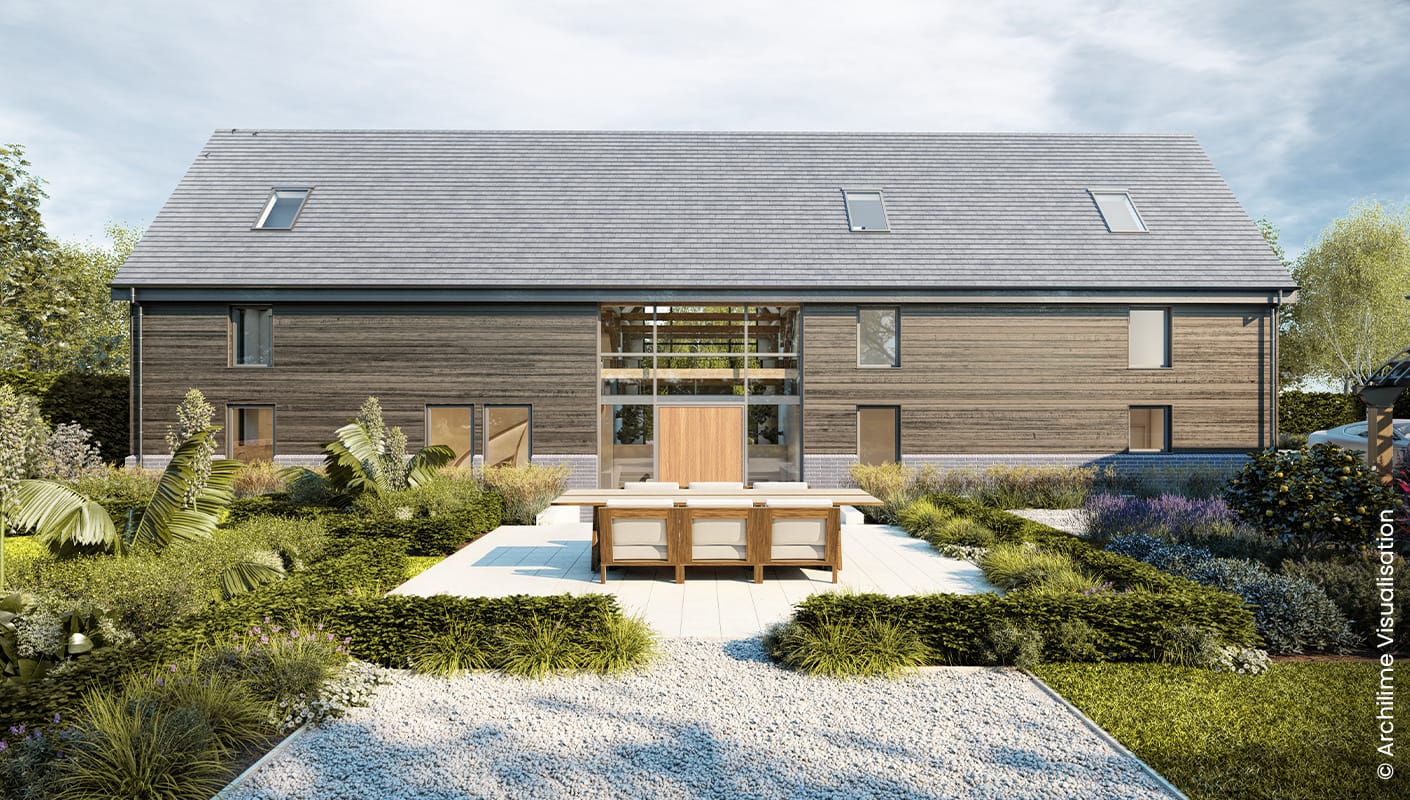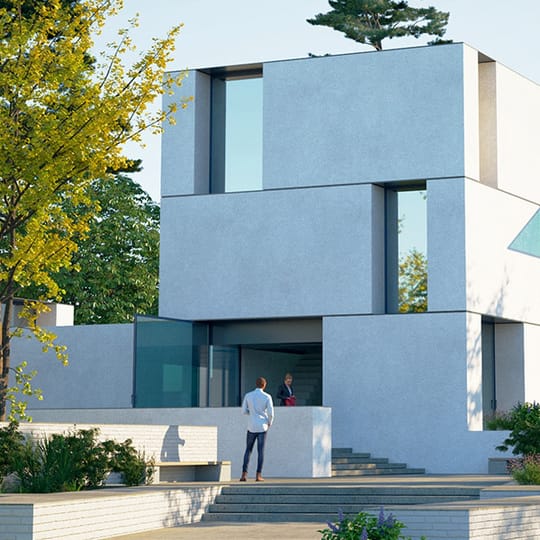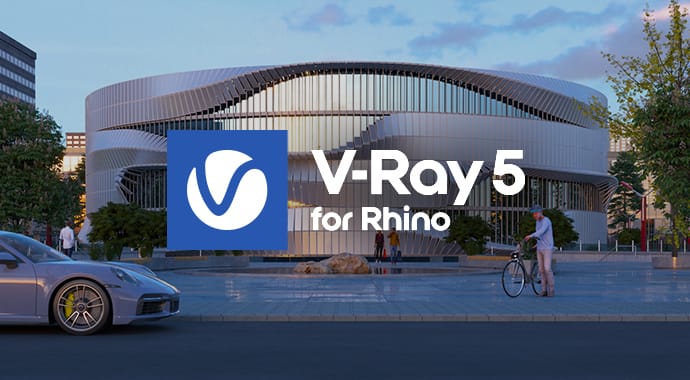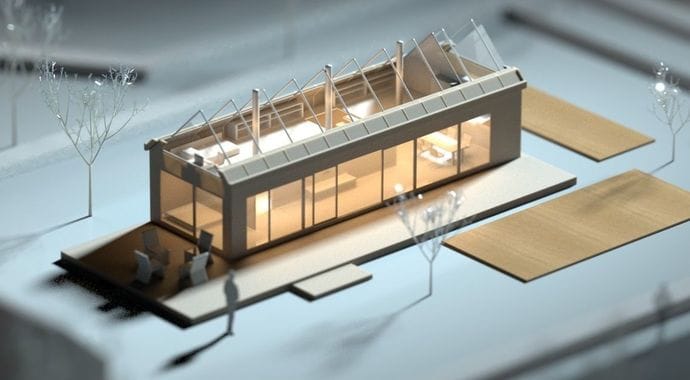V-Ray Vision makes it easy to export your SketchUp, Rhino, and Revit projects to immersive virtual reality. Expert Shusen Zhao explains how to get started.
What if there was a better way to turn architectural visions into reality? A method which brings collaboration, creativity, and visual accuracy all in real-time. You can now rely on V-Ray Vision to make that happen.
In this article, we’ll explore the benefits V-Ray Vision brings to the arch viz workflow and how you can implement it in your next project.
Bring virtual reality to work and improve communication
The launch of V-Ray Vision brings arch viz into the era of real-time interaction. When a creative team is deliberating over the architectural plan, opening Vision allows each designer to experience scenes in virtual reality, making communication full of engagement.
On the other hand, Vision’s virtual reality also improves communication efficiency between designers and clients. As a designer, you don’t need to produce a large amount of text for preliminary communication reports; instead, you only need to open Vision to allow clients to experience virtual reality. And what could be more convincing to prospective customers than exploring the architecture in real-time with Vision?
Watch the video below to see how V-Ray Vision helps Archilime improve their workflow. You can also read over the documentation for more tips on how to work with Vision.


Enjoy the ease of use
V-Ray Vision is integrated into V-Ray 5, a leading architectural rendering program, and once you install it, it will appear in the "Extensions" section of SketchUp, Rhino, and Revit.
If you’ve played a PC game, you’ll know the drill. To interact, you can use "W", "A", "S", "D" to move the camera back-and-forth and side-to-side, while a left-click and drag can be used to look around. Holding down space temporarily increases the movement speed of the camera.
Take advantage of low hardware requirements and many supported features
Vision is a rasterizer, a game engine meant to be used as a real-time scene viewer. It is not limited by GPU performance and can run smoothly even in macOS.
In addition, Vision supports most V-Ray features including IES lights, grass, and even Cosmos assets. This allows you to get results in Vision that are close to what you would get in the V-Ray Frame Buffer.
Explore light like never before
When V-Ray Vision is started, it automatically loads SketchUp, Rhino, or Revit model files and creates an interactive link with your scene.
V-Ray Vision is very fast, so you can preview the adjustments in real time while exploring the architectural lighting process. With V-Ray Vision, you can adjust light and shadows as you wish and get feedback quickly.
In addition, V-Ray Vision has an "Auto Exposure" function, so you can get satisfactory results even in dimly lit rooms.
Create animations fast and use different import and export methods
Vision supports four camera modes - in addition to the standard camera mode, it also includes VR spherical panorama, VR cubemap 6x1, and VR cubemap 6 image camera modes.
Once you have exported your VR images, you can use your phone to view them with the help of apps such as Gear VR. You can also check out Christopher Nichols' Guide to VR to learn more about how to use VR images and show your clients the results.
V-Ray Vision supports exporting jpg and png formats, as well as tga and exr formats. In addition, Vision also supports fast export of WebM animations.
In addition to getting quick results from your project by linking in real time, you can also import your project into Vision in .vrscene format and save your results by combining Vision's rich export options.
Share your results with just a few clicks
Vision supports saving your project as an .exe format, making it easy to share your scene with others to experience in real-time 3D on their own machine without the need for any additional software or license. Just hit export and reviewers can experience your full scene, with the full functionality of V-Ray Vision including navigation controls, color correction parameters, and more.
In summary
V-Ray Vision provides real-time interaction, high performance and is easy to implement in your architectural rendering workflow. To make things better, many of V-Ray’s features are supported, giving you the creative freedom to craft your best work. So what are you waiting for? It’s time to start your next project.





